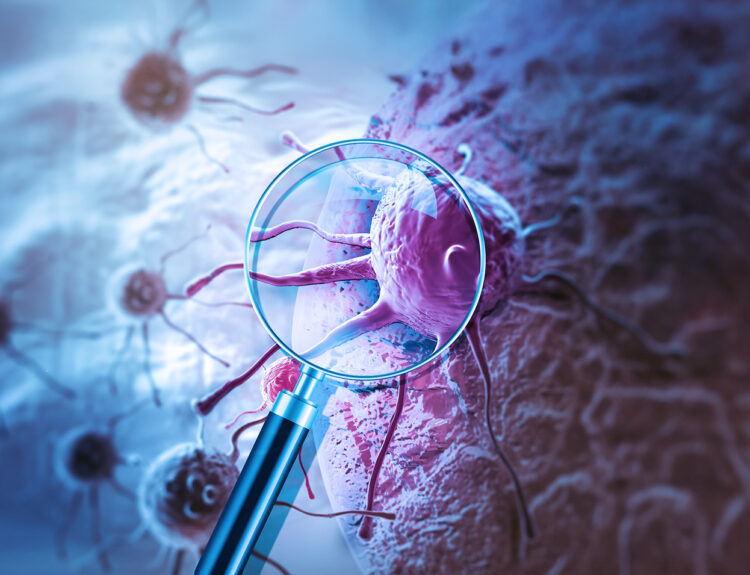Advanced melanoma has long been recognized as one of the most aggressive and treatment-resistant forms of skin cancer. Traditional therapies such as chemotherapy, radiation, or even immunotherapy often provide limited results, leaving clinicians and patients searching for alternatives. In a remarkable recent breakthrough, researchers have now harnessed the power of a genetically modified Herpes Simplex Virus (HSV-1) to combat this deadly disease. This modified virus, central to a strategy called Oncolytic Virotherapy, is designed to selectively infect and destroy tumor cells from within while simultaneously activating the patient’s immune system to target remaining cancer cells. The dual mechanism – direct tumor lysis and immune activation, offers a novel, multi-pronged approach that conventional treatments cannot replicate.
Clinical trials in 2025 have shown significant tumor (melanoma) regression and, in some cases, complete remission, demonstrating that even the most treatment-resistant cancers may be vulnerable to innovative Oncolytic Virus Therapy. This breakthrough signals a new era where viruses once considered harmful are being reimagined as precision instruments in the fight against cancer.
The Science Behind Oncolytic Virotherapy
The Herpes Simplex Virus, best known for causing cold sores, has now been repurposed as a highly sophisticated cancer-fighting tool. Through advanced genetic engineering, cancer researchers have transformed it into oncolytic viruses called RP1, also known as Vusolimogene Oderparepvec, specifically designed to target malignant cells while leaving healthy ones unharmed.
Unlike its naturally occurring counterpart, RP1 has been modified to replicate only inside tumor cells. Once inside, the virus multiplies until the cancer cell bursts, releasing new viral particles that spread to nearby tumor cells, thereby amplifying the cancer-killing effect.
But the power of RP1 extends far beyond simple cell destruction. Each burst cancer cell releases tumor-specific antigens (unique markers) that flag the presence of cancer to the immune system. This triggers a robust immune response, effectively “teaching” the body to recognize and attack lingering cancer cells that may have escaped the initial viral assault.
In essence, RP1 works in two ways – it directly kills cancer cells and simultaneously converts the patient’s own immune system into a long-term weapon against the disease.
The Clinical Results of Oncolytic Virotherapy So Far Have Been Striking:
In a phase 1/2 clinical trial conducted on patients with advanced melanoma, RP1 was combined with Nivolumab (Opdivo), a checkpoint inhibitor that boosts immune activity by blocking the PD-1 protein. The results revealed that approximately one-third of patients experienced a measurable reduction in tumor size of at least 30%, while nearly one in six achieved complete remission, with all visible tumors disappearing.
Even more encouraging was the fact that many of these patients had exhausted nearly every other therapeutic option before joining the study.
Published by HSC News (Keck Medicine of USC), these findings highlight the potential of oncolytic virus therapy as a powerful addition to the cancer treatment arsenal. Not only does RP1 amplify the effects of existing immunotherapies like Nivolumab, but it also opens the possibility of a treatment that is both highly targeted and capable of producing durable, long-lasting responses.
How RP1 Oncolytic Viruses Work: A Dual Mechanism of Action
One of the most remarkable aspects of RP1 is the way it leverages a two-pronged attack against cancer. Unlike traditional cancer therapies that either directly destroy tumor cells or rely solely on the immune system, RP1 oncolytic viruses integrate both strategies for maximum impact.
-
Direct Tumor Cell Lysis

Once injected into the tumor, RP1 selectively infects cancer cells. These malignant cells provide the perfect environment for the virus to replicate. As RP1 multiplies inside, the pressure eventually causes the cancer cell to rupture, a process known as Oncolysis.
Each destroyed cell releases new copies of the virus, which go on to infect neighboring cancer cells, and a cascade of cancer-specific proteins that act as biological “danger signals.” This creates a ripple effect, spreading the cancer-killing action throughout the tumor mass.
-
Immune System Activation
The release of tumor antigens during cell lysis is critical. Cancer cells normally hide from the immune system, cloaking themselves to avoid detection.
However, when RP1 bursts the tumor cells open, it exposes these hidden antigens to the immune system in an unmistakable way. This effectively “unmasks” the cancer, prompting immune cells (particularly T cells) to recognize and attack not just the infected tumor but also any other cancerous cells in the body.
Together, these mechanisms create a synergistic effect, which means the virus acts as both a direct assassin of cancer cells and a powerful trainer of the immune system. This dual action not only shrinks existing tumors but also helps build long-term immune memory, which could reduce the risk of recurrence and improve survival outcomes.
In other words, RP1 Oncolytic Virotherapy does not just fight cancer in the moment, it teaches the body how to keep fighting it in the future.
Oncolytic Virotherapy – Implications for Cancer Treatment
The success of RP1 in treating advanced melanoma represents a significant advancement in cancer therapy. Unlike traditional treatments like chemotherapy, which can harm healthy cells, oncolytic virotherapy specifically targets cancer cells, potentially reducing side effects and improving patient outcomes.
Moreover, the ability of RP1 to stimulate the immune system may lead to long-lasting protection against cancer recurrence. This approach could pave the way for new treatments for other hard-to-treat cancers, such as glioblastoma and pancreatic cancer.
Conclusion: The Future is ‘Oncolytic Virotherapy’
The success of RP1 marks just the beginning of a new era in cancer treatment. Researchers are now exploring ways to refine Oncolytic Virotherapy, whether by fine-tuning dosage schedules, pairing RP1 with different immunotherapies, or expanding its use beyond melanoma to other hard-to-treat cancers.
Each of these steps brings us closer to making oncolytic viral therapy a mainstay in personalized oncology, where treatments are designed to prolong life and improve quality.
For those interested in diving deeper into the science and ongoing trials related to Oncolytic Virotherapy, these resources provide valuable insights:
- Keck Medicine of USC: Researchers have shown that the herpes virus that kills cancer effectively treats some advanced melanoma.
- ScienceAlert: A clinical trial found that the modified herpes virus shrinks deadly skin cancers.
- Banner MD Anderson: Study finds breakthrough potential in melanoma treatment.
Together, these studies suggest that therapies like RP1 will change how we treat cancer today, and also transform the very foundation of oncology.
Also read
Immunotherapy & Early Cancer Detection
FAQs
1. What is Oncolytic Virotherapy?
Oncolytic Virotherapy is a cancer treatment that uses genetically modified viruses to selectively infect, replicate within, and destroy cancer cells while sparing healthy cells.
2. How does the herpes virus help fight skin cancer?
Researchers have modified the Herpes Simplex Virus (HSV-1) to target tumor cells. This oncolytic virus therapy kills cancer cells directly and activates the immune system to attack remaining tumors.
3. Which cancers can Oncolytic Virotherapy treat?
So far, clinical trials have shown promising results in advanced melanoma (a deadly form of skin cancer). Researchers are also exploring its use in glioblastoma, pancreatic cancer, and other hard-to-treat cancers.
4. Is Oncolytic Virus Therapy safe for patients?
Yes. Oncolytic viruses are genetically engineered to replicate only inside tumor cells, leaving normal healthy cells unharmed. Patients in trials have tolerated the therapy well, though side effects can vary.
5. What makes Oncolytic Virotherapy different from chemotherapy or radiation?
Unlike traditional treatments that can damage both healthy and cancerous cells, oncolytic viruses specifically target cancer cells. They also stimulate the immune system, offering long-term protection against recurrence.

MDForLives is a vibrant community of healthcare professionals and patients dedicated to shaping the future of healthcare. We provide valuable global insights to healthcare companies through online surveys, interviews, and discussion forums.








